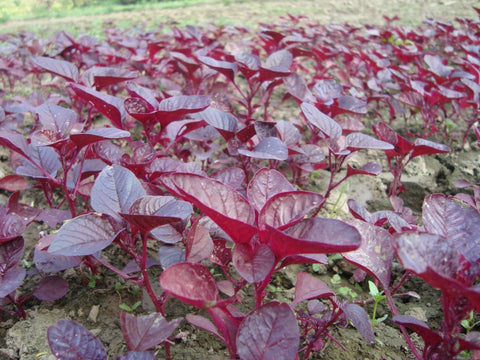How to Increase Endurance Levels
When exploring how to increase endurance, there are multiple variables to consider that lead to the overall resilience of the body during exercise. Endurance is what allows people to work out at a maintained intensity for prolonged periods of time. The main attributes that contribute to an individual’s endurance profile are VO2 Max and the lactate threshold. V02 Max refers to the maximum rate at which an athlete’s body can consume oxygen during exercise. Maximal oxygen uptake can be increased with training and nitric oxide boosters. Nitric oxide helps support blood flow and oxygen to the muscles, which aids in a stronger V02 Max. The lactate threshold of high performers is the point during intense exercise when the body begins to produce lactate faster than it can eliminate it.
The lactate threshold can be boosted by increasing training volume, doing tempo runs, and performing interval training. One study published by the University of São Paulo showed that highly trained athletes displayed significantly greater lactate thresholds than lowly trained runners, regardless of the calculation used. Nitric oxide assists the body in getting more oxygen to tissues, reducing the amount of lactic acid build-up and the amount of fatigue many athletes face during endurance training.
There are various ways to measure endurance and work hard towards increasing it. To estimate and achieve cardiorespiratory endurance, a study from the University of Iowa Hospitals and Clinics recommends subtracting your age from the number 220 and sustaining workouts at this heart rate level.
How To Increase Endurance Through Training
Cardiovascular exercises are movements that raise the heartbeat and encourage aerobic activity. Cardiovascular endurance training increases blood flow and oxygen distribution in the body, in turn increasing red blood cells, hemoglobin, and improving organ function. Many athletes aim to increase endurance during long workouts. It’s important to experiment with duration, intensity, and consistency of training to build the body’s physical adaptability.
Cardio workouts to increase endurance include:
- Running
- Swimming
- Cycling
- Jumping Rope
- Burpees
- Jumping Jacks
- Jump Squats
- Brisk Walking
- Staircase Running or Climbing
- Rowing
Cardiovascular endurance can be built through a variety of physical activities. It’s also advantageous to cross-train with workouts such as High-Intensity Interval Training (HITT) or plyometrics (exercise that uses varying speed and force to build muscle power). HIIT can help improve endurance in combination with traditional exercises. When discovering how to increase endurance, training variation can help with the process, keeping the body agile. A meta-analysis of many HIIT studies showed a marked improvement in endurance.
It’s also beneficial to incorporate resistance training alongside cardiovascular workouts. Resistance training can strengthen the body's bones, ligaments, tendons, and muscles. This aids in elevated fitness levels for the entire body.
The Relationship Between Endurance and Nutrition

Many people wonder how to increase endurance by pushing physical limits, but sometimes neglect the importance of incorporating the right nutrition to gain stamina. The body requires a combination of training and nutrition to optimize performance. A study from the University of Birmingham suggests that for endurance exercise lasting 30 minutes or more, it was dehydration and carbohydrate depletion that were the major contributors to fatigue. In tandem with this research, numerous studies show that nutritional nitric oxide boosters can improve oxygen efficiency in the body leading to greater physical output for longer periods of time.
Nitrate-rich vegetables and their juices are commonly used to boost nitric oxide and athletic performance, promoting sustained endurance while training. Naturally occurring nitrate can be found in foods like beets, arugula, red spinach, celery, broccoli, and many others. If the body is able to maximize oxygen dispersion throughout the body, fatigue lessens, and energy levels can be maintained for longer durations. A clean and potent nitric oxide booster is beet juice and red spinach juice, and many athletes use this nutritional supplementation to enhance the effects of training.
A study published in the journal Nutrients found that beetroot juice has ergogenic effects on cardiorespiratory endurance. The same study suggests that beetroot juice can improve endurance by “increasing efficiency, which improves performance at various distances. It increases time to exhaustion at submaximal intensities, and may improve the cardiorespiratory performance at anaerobic threshold intensities and maximum oxygen uptake (V02 Max).”
Nutrition is the fuel that helps maintain the body’s energy levels during strenuous exercise. It’s beneficial to incorporate nutritionally dense foods into the diet, alongside nitrate-rich fruits and vegetables, to increase nitric oxide levels. Nitric oxide and cardiovascular exercise work symbiotically. A nitrate-rich plant-based diet supports workout endurance, and high-performance training increases nitric oxide levels in the body.
The Effect of Age on Endurance Levels

Muscle tissue changes as we age. Starting at the age of 30, muscle mass begins to decrease 3-8% per decade, and that rate increases once we hit 60 years of age.

The body’s slow-twitch and fast-twitch (slow energy expenditure and fast energy expenditure, respectively) muscle fibers deteriorate with age. This can influence the strength and energy output that impacts performance levels. A study published in Royal Society explained how the body uses oxygen less efficiently with age, which, as we know, directly correlates to our capacity for building endurance levels.
Diminished oxygen efficiency is related to decreased nitric oxide synthesis and has been associated with aging. Researchers have also discovered how age-related nitric oxide synthesis impacts responsiveness in human platelets (how well our blood clots when we need it to). Increased formation of Monocyte-Platelet Aggregates (MPAs) is a marker for inflammatory response in the body and is notably higher for those experiencing cardiovascular challenges. Additionally, this leads to more rigid blood vessels.
An effective way to support nitric oxide decline as we age is with a nitrate-rich diet. In order to protect the body through the aging process, it’s important to maintain cardiovascular health and muscle retention. The question of how to increase endurance is interconnected with how well the body uses oxygen. Nitric oxide boosters support endurance levels and can assist cardio performance and muscle recovery as we age.
The Influence of Proper Recovery on Endurance
For people of all ages, endurance building is supported by a serious recovery routine. Researchers from Northumbria University in England found that beets may quicken muscle recovery after a workout. Participants who drank beetroot juice reported less muscle soreness and felt more prepared for their next workout. Beets are good for muscle recovery because of their high index of nitrate, vitamins, and minerals. It’s important to support the muscle recovery process with nutrition, hydration, and adequate rest after high-intensity workouts.
When the body recovers effectively, muscles adapt quicker, and performance frequency increases. If recovery is neglected, sustained endurance can become increasingly difficult to achieve, and the risk of injury increases. This is especially true as the body ages and muscles begin to weaken. Beetroot juice and nitrate-rich foods can help support nitric oxide deficiency and encourage oxygen efficiency in the body.
Ultimately increasing endurance levels comes down to a combination of nutrition, training, effective recovery, and maximizing how the body uses oxygen - nitric oxide is a huge part of all these factors. It’s important to prioritize these essential points to create an endurance building plan.
Resources
Fernandes TL, Nunes Rdos S, Abad CC, Silva AC, Souza LS, Silva PR, Albuquerque C, Irigoyen MC, Hernandez AJ. Post-analysis methods for lactate threshold depend on training intensity and aerobic capacity in runners. An experimental laboratory study. Sao Paulo Med J. 2015 Nov 13;134(3):193-8. doi: 10.1590/1516-3180.2014.8921512. PMID: 26576496.
Jeukendrup AE. Nutrition for endurance sports: marathon, triathlon, and road cycling. J Sports Sci. 2011;29 Suppl 1:S91-9. doi: 10.1080/02640414.2011.610348. Epub 2011 Sep 15. PMID: 21916794.
Domínguez R, Cuenca E, Maté-Muñoz JL, García-Fernández P, Serra-Paya N, Estevan MC, Herreros PV, Garnacho-Castaño MV. Effects of Beetroot Juice Supplementation on Cardiorespiratory Endurance in Athletes. A Systematic Review. Nutrients. 2017 Jan 6;9(1):43. doi: 10.3390/nu9010043. PMID: 28067808; PMCID: PMC5295087.
Goubareva I, Gkaliagkousi E, Shah A, Queen L, Ritter J, Ferro A. Age decreases nitric oxide synthesis and responsiveness in human platelets and increases formation of monocyte-platelet aggregates. Cardiovasc Res. 2007 Sep 1;75(4):793-802. doi: 10.1016/j.cardiores.2007.05.021. Epub 2007 May 24. PMID: 17572401.
Rittweger Jörn, di Prampero Pietro Enrico, Maffulli Nicola and Narici Marco V 2009Sprint and endurance power and ageing: an analysis of master athletic world recordsProc. R. Soc. B.276683–689
Engel Florian Azad, Ackermann Alexander, Chtourou Hamdi, Sperlich Billy. High-Intensity Interval Training Performed by Young Athletes: A Systematic Review and Meta-Analysis. Frontiers in Physiology. VOLUME 9, 2018. https://www.frontiersin.org/article/10.3389/fphys.2018.01012
Volpi, E., Nazemi, R., & Fujita, S. (2004). Muscle tissue changes with aging. Current opinion in clinical nutrition and metabolic care, 7(4), 405–410. https://doi.org/10.1097/01.mco.0000134362.76653.b2





Comments (0)
There are no comments for this article. Be the first one to leave a message!